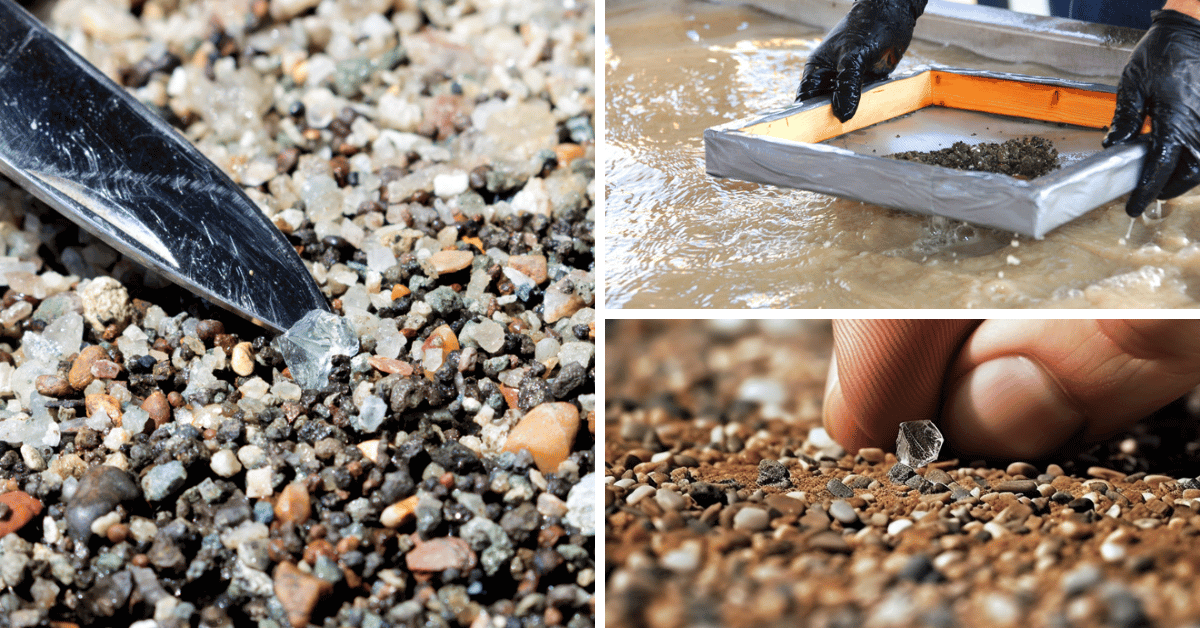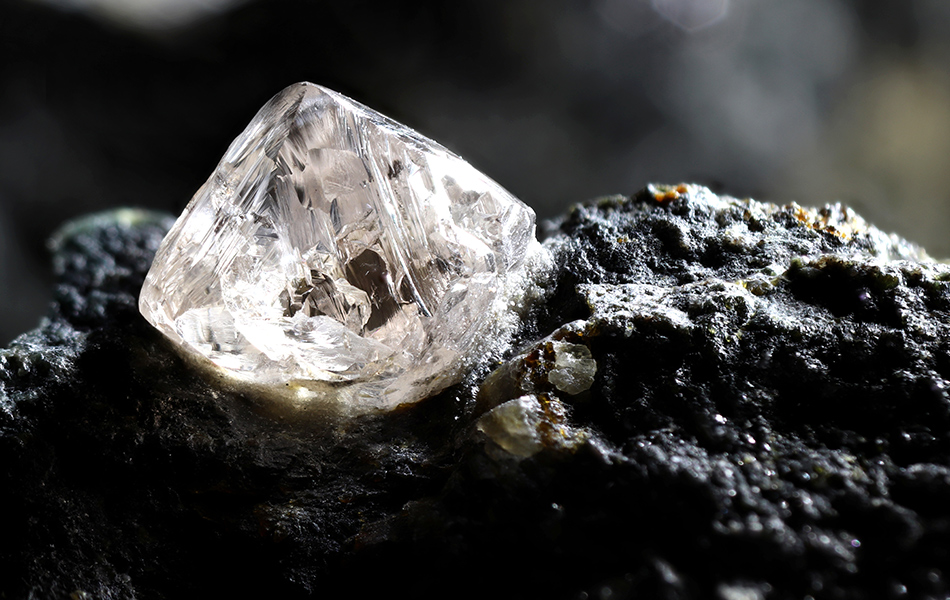Virginia | Diamond Mining in the USAVirginia | Diamond Mining in the USA
While diamonds are often associated with distant locales like Africa or Russia, the United States boasts its own hidden gems, including diamond mining sites. Virginia, a state rich in history and natural resources, has been a surprising contender in the American diamond mining scene. In this article, we delve into the best places to mine for diamonds in the United States, the history and current state of diamond mining in America, the fascinating process of diamond extraction, and an overview of the global geology of diamond mines and deposits.
Best Places To Mine For Diamonds in The United States
While the United States may not be globally renowned for diamond mining, there are a few notable locations where enthusiasts can try their luck at finding these precious gems. Here are some of the best places to mine for diamonds in the United States:

- Crater of Diamonds State Park, Arkansas:
- Location: Murfreesboro, Arkansas
- Overview: Known as the “Diamond State,” Arkansas is home to the Crater of Diamonds State Park. This park is the only diamond-producing site in the world where the public can search for and keep what they find. Visitors can explore over 37 acres of plowed fields, hoping to unearth diamonds, as well as other gemstones like amethyst and garnet.
- Herkimer Diamond Mines, New York:
- Location: Herkimer County, New York
- Overview: Herkimer Diamonds are not true diamonds but rather double-terminated quartz crystals found in the Herkimer County region of New York. Visitors to the Herkimer Diamond Mines can collect these distinctive and often exceptionally clear crystals. While not traditional diamonds, Herkimer Diamonds offer a unique and captivating experience for rockhounding enthusiasts.
- Kelsey Lake Diamond Mine, Colorado:
- Location: Larimer County, Colorado
- Overview: The Kelsey Lake Diamond Mine in Colorado was historically known for producing diamonds, including the famous “Colorado Diamond.” While the mine is no longer operational, the region’s geological history and past discoveries make it an intriguing destination for those interested in the legacy of diamond mining.
- Crater of Diamonds State Park, Wyoming:
- Location: Sublette County, Wyoming
- Overview: Wyoming also boasts its own Crater of Diamonds State Park, offering a diamond-hunting experience. While not as widely known as its Arkansas counterpart, this location provides enthusiasts with the opportunity to search for diamonds in a unique geological setting.
- Lake County, Colorado:
- Overview: Lake County in Colorado has been known for small-scale diamond discoveries in the past. While not a commercial mining area, the presence of diamonds in the region adds an element of excitement for those exploring less traditional diamond locales.
- California Diamond Mine, California:
- Location: Various regions
- Overview: There have been reports of small-scale diamond discoveries in various regions of California. These findings, while not on the scale of major diamond mines, showcase the diversity of geological conditions that can lead to the presence of diamonds.
- Various Alluvial Deposits:
- Overview: In addition to specific mines or parks, enthusiasts interested in diamond hunting may explore various alluvial deposits in rivers and streams. While finding diamonds in these settings is rare, it adds an element of adventure to the pursuit.
Diamond Mining in America: Past, Present, and Future

- Historical Diamond Mining:
- The history of diamond mining in the United States dates back to the mid-19th century. States like Arkansas and Colorado witnessed early diamond rushes, although the scale of commercial mining operations remained limited.
- Current State of Diamond Mining:
- While the U.S. is not a major player in the global diamond market, there are still active mines and exploration projects. The emphasis has shifted to industrial diamonds used in various applications, including cutting and drilling.
- Future Prospects:
- Advancements in mining technology and a growing interest in domestic resources could influence the future of diamond mining in the U.S. However, the industry faces challenges, including economic viability and environmental concerns.
How Are Diamonds Mined?
Diamonds are mined through various methods, each tailored to the geological characteristics of the deposit. The process of diamond mining involves extracting the precious stones from the Earth’s mantle or alluvial deposits. Here’s an overview of how diamonds are mined:
- Exploration and Geological Surveys:
- Purpose: Before mining begins, geological surveys and exploration activities are conducted to identify potential diamond-bearing areas.
- Methods: Techniques such as aerial surveys, soil sampling, and core drilling are employed to assess the geological conditions.
- Primary Diamond Deposits:
- Types: Diamonds are primarily found in two types of deposits: kimberlite pipes and alluvial deposits.
- Kimberlite Pipes: These volcanic structures bring diamonds from the mantle to the Earth’s surface.
- Alluvial Deposits: Diamonds are carried by rivers and deposited in sediment, creating alluvial deposits.
- Open-Pit Mining:
- Purpose: Used for kimberlite pipe deposits that are near the Earth’s surface.
- Process:
- Excavation: Large quantities of earth are removed using heavy machinery, creating a pit.
- Extraction: Diamond-bearing ore is extracted from the kimberlite pipe.
- Underground Mining:
- Purpose: Employed when diamond deposits are located deep below the surface.
- Process:
- Shaft Sinking: Vertical or inclined shafts are created to access the kimberlite pipe.
- Tunnelling: Sub-horizontal tunnels lead to the diamond-bearing rock for extraction.
- Alluvial Mining:
- Purpose: Used for alluvial deposits found in riverbeds or coastal areas.
- Process:
- Excavation: Sediment is removed to access the diamond-bearing gravel.
- Screening: Material is screened to separate diamonds from other minerals.
A Review of the Geology of Global Diamond Mines and Deposits
- Kimberlite Pipes:
- Most primary diamond deposits are associated with kimberlite pipes, volcanic structures that bring diamonds from the Earth’s mantle to the surface.
- Secondary Deposits:
- Alluvial deposits, where diamonds are carried by rivers and deposited in sediment, represent secondary sources. These deposits are often found downstream from primary kimberlite sources.
- Global Distribution:
- Major diamond-producing countries include Russia, Botswana, Canada, and Australia. Understanding the geological conditions conducive to diamond formation is crucial for identifying potential mining sites.
Conclusion
While Virginia might not be synonymous with diamond mining, the United States has its own share of glittering opportunities. From the historic Crater of Diamonds in Arkansas to the Herkimer Diamond Mines in New York, enthusiasts can explore various sites in search of these precious gems. The history of diamond mining in America reflects the nation’s entrepreneurial spirit, and while the industry may not dominate the global market, its future holds promise with advancements in technology and sustainable practices. As we unearth the hidden stories beneath the soil, the allure of American diamonds continues to sparkle, contributing to the rich tapestry of the global diamond industry.…
